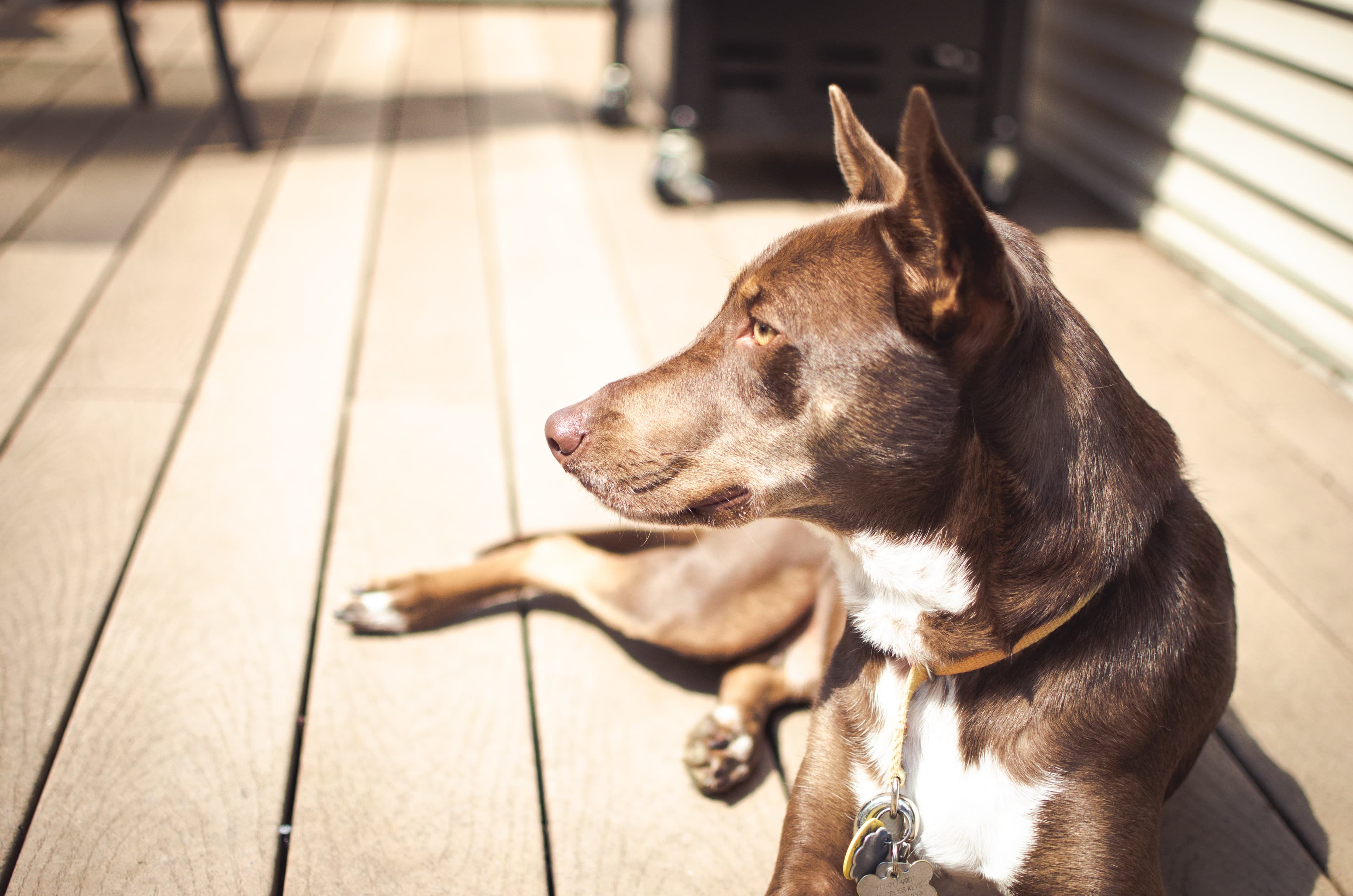Heat stroke in dogs
Did you know that dogs can suffer from heat stroke, and that it is quite common? However, it is something that can be incredibly dangerous for the dog, especially if the dog is left unattended for too long in a very hot or confined place. You really want to avoid this, and not just because it's incredibly stressful and uncomfortable for the dog. Situations that can lead to heat stroke in the dog can actually lead to the dog's death. If it doesn't lead that far, the dog can suffer damage to internal organs, and serious ones at that.
So if you've been thinking about leaving your dog in the car on a hot, sunny summer's day, or taking him for a walk in really hot weather without hydration and coolness, think again - it could have life-threatening consequences. Learn more about heat stroke in dogs below!
Why is heat stroke so dangerous for dogs?
Why is it that most of us humans enjoy spending time in hot, sunny weather, while dogs suffer? Well, the answer is that dogs don't have the same regulation of their body temperature that we do. They can't sweat like us humans.
For a dog to cool down and ventilate its body temperature, it has to pant or pant instead - the cold air passing through the blood vessels in the mouth cools down the blood. It can also help if the dog lies down in a cooler place, where its stomach and pads are cooled.
However, if it is not possible for the dog to cool down to regulate body temperature due to lack of shade, cold or fluids, this can cause chaos. If the air is too hot, panting will not help either, and may instead make the dog even hotter. Eventually, this can lead to heat stroke, which can be life-threatening!
What can cause heat stroke in dogs?
There are a number of different situations that can cause heat stroke in dogs. Some of these are fairly obvious, while others are ones you don't think about at all. By far the most common situations that lead to heat stroke are:
Dog in a hot car
Dog in confined spaces
Lack of shade or coolness from the sun
Exercising in too hot weather without rest and hydration
Hot car and confined spaces
Most dog owners are aware that they should not (or even in some situations must not) place their dog unattended in the car on a hot and sunny summer day. Nevertheless, there are still a great many dog owners who manage to make this mistake.
And this, dogs trapped in cars or other confined spaces, is by far the most common cause of heat stroke in dogs. For this very reason, there is now a law that says dogs must not be left unattended in cars when the outside temperature exceeds 25 degrees.
However, you should never leave your dog locked in the car even if the temperature is lower. This also applies on cloudy days, if you leave a window or tailgate open, if you are standing in the shade or if it is early in the day.
Too long in the sun
It's also common for dogs to suffer from heat stroke if they're in the sun for too long, especially if there's a lack of shade, cooling and fresh water. This can occur if you are outside when it is very hot and sunny, or if you take the dog for an exercise session when the outdoor temperature is high.
The dog itself
Something that may be useful to know about is that some breeds of dog, and even some dogs, are a little extra sensitive to heat. This may be the case, for example, with blunt-nosed dogs that have difficulty ventilating to regulate their body temperature from the start.
Overweight dogs, dogs with long, thick coats, and dogs with illnesses and respiratory problems can also find it a little extra difficult in the heat. Heat stroke can then occur much more easily, while it can quickly lead to more serious consequences.
Symptoms of heat stroke - how to tell if your dog is affected
Although heat stroke is common in dogs, and can lead to serious consequences, it's not always easy to tell when your dog has suffered from it. However, there are a lot of symptoms to look out for, which in turn can be signs of heatstroke. Some early signs of heat stroke, or heat stress, are:
Heavy panting, panting and panting
Dog drooling
The dog is anxious or nervous
The dog is trying to find coolness
High pulse
Red and dry mucous membranes in the mouth
If it appears that the dog has suffered a more serious heat stroke, the following symptoms may be detected:
Weakness
Wobbling or collapsing
Difficulty breathing
Vomiting and diarrhoea
Shock and unconsciousness (very severe)
My dog has suffered heat stroke - what should I do?
Is your dog showing symptoms of heat stroke? If so, it's incredibly important that you, the dog owner or carer, act as quickly as possible! Especially if your dog is showing serious symptoms, you should go to the vet immediately and do everything you can to cool your dog down on the way there.
If your dog doesn't show any obvious symptoms but you're worried that your dog has heatstroke, you can always consult a digital vet, which as a Lassie insurance customer you have unlimited access to directly in our app.
Help your dog on his own
However, if your dog has suffered a milder form of heatstroke, there are a number of things you can do before a vet needs to be called. However, a vet should always be contacted, and even visited, if you suspect your dog is suffering from heatstroke.
Cool down
Before you take your dog to the vet for a confirmatory examination, make sure the dog is in a cool place in the shade. The dog should lie still and be offered cold, fresh water as needed.
If you want to help the dog cool down further, you can put wet (lukewarm) towels on it, or even shower it in lukewarm water. Groins, armpits, paw pads and head are most important. However, remember not to cool the dog too quickly, and never give fever-reducing medication during heat stroke.
Keep an eye on the temperature
It is a good idea to check your dog's body temperature at regular intervals after you have started cooling. After a few minutes, take its temperature with an anal thermometer and then continue cooling until the dog's temperature is around 39.5 degrees. Finally, make a visit to the vet to make sure everything is in order!






